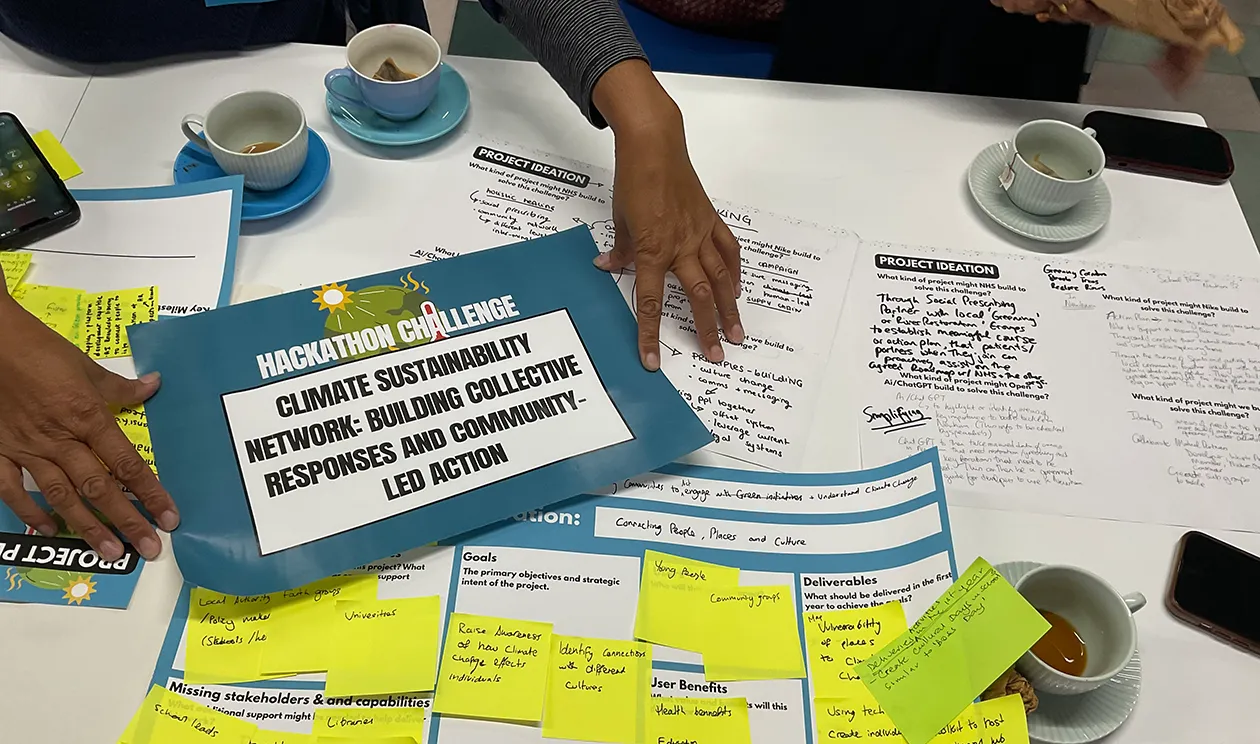What does it mean for citizens to design their own communities, from their morning walks to grocery store trips?
Changemakers with an interest in answering this question came together recently against the backdrop of the Royal Docks for the Newham Futures Hackathon.
The Hackathon, a project that brought together UCL East, University of East London, as well as local groups, took place in late September, ushering in community-led discussions about Newham’s future.
There was one phrase that defined the Hackathon: co-design.
For those not familiar with the term, it’s a new buzzword often thrown around in the world of urban planning.
“Co-design is a people-centered process using creative methods for problem-solving and designing policy solutions with communities,” says UCL associate professor Nidhi Chaudhary, who led the Hackathon.
“It’s about empowerment and engaging with different types of stakeholders who hold local knowledge and lived experience.”
The workshop had participants bring their diverse input to the table, quite literally.

One of the ways those present explored co-design was putting their ideas down using a paper ‘Baobab Tree’.
The tree itself acted as a metaphor: its roots are the past, trunk the present, and leaves the future.
At its core, the gathering was about using imagination to collaboratively build a better future.
The site-specific nature of the project was key to its ability to facilitate discussions, focusing on a neighborhood that participants know, a type of lived-in experience that can’t be matched.
“Being based in Newham has completely shaped the collective imagination of the project,” says Chaudhary, who tailored it to the borough.
“We were able to collaborate in fun and playful ways with community residents, businesses, policymakers, and young people in the borough.”
For Chaudhary, when it comes to teaching these workshops, equity, empathy, and dialogue are at the forefront.
“It’s about teaching creative participatory design techniques, asking how we can create safe, open, and inclusive spaces. These questions allow diverse and transparent ways for stakeholders to collaborate genuinely.”

On a large scale, it becomes tricky to ensure all voices are heard at every stage of the decision-making process. Even with the best of intentions, co-washing can occur.
Co-washing, like greenwashing, is when false promises are made. Here, it was when claims to include active community engagement in a design project were made but not followed through on.
“In order to avoid co-washing, I would suggest to genuinely commit to engaging with communities and organisations with diverse ‘lived’ and ‘unlived’ experience from the start,” adds Chaudhary.
“It is essential for my students to be reflective of their own positionality in co-design, ensuring that they are really listening and integrating conflicting views. This builds trust and leads to shared decision making.”
The use of AI as a co-design tool was another crucial component in the programme.
“Our facilitators fed key discussions from the ‘Baobab Tree’ exercise into an AI tool to generate 10-year future vision statements in real-time,” explains Chaudhary.
At the end of the workshop, the leaders shared an AI output, demonstrating how it had condensed the notes gathered that day:
“‘To empower Newham’s diverse communities—especially its youth—to co-create a greener, more inclusive future through education, collaboration, and sustainable innovation,'” recalls Chaudhary, speaking of the output of the AI engine.
“Participants were impressed by the speed, creativity, and precision with which AI distilled the entire workshop’s discussions into a single sentence. Seeing AI in action and bringing participants’ ideas to life created a real sense of local policy impact and engagement.”
With the community’s future at the heart of this project, empowerment is what Chaudhary hopes participants take away.
“I want people to come out feeling excited to shape their own futures, and to have an impact on the local policy in the area,” she says.
And the project is not done yet. As Newham evolves each day, so do the needs of the community which ebb, flow, and change direction entirely.
“I am excited to see how the projects and local collaborations and partnerships created as part of these co-design workshops have progressed and evolved,” says Chaudary, looking ahead to the group's next get-together in February 2026.





